
Qix is a 1981 puzzle video game developed by husband and wife team Randy and Sandy Pfeiffer and published in arcades by Taito America. Qix is one of a handful of games made by Taito's American division. At the start of each level, the playing field is a large, empty rectangle, containing the Qix, an abstract stick-like entity that performs graceful but unpredictable motions within the confines of the rectangle. The objective is to draw lines that close off parts of the rectangle to fill in a set amount of the playfield.
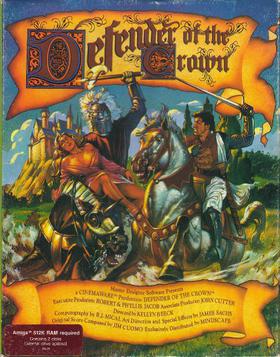
Defender of the Crown is a strategy video game designed by Kellyn Beeck. It was Cinemaware's first game, and was originally released for the Commodore Amiga in 1986, setting a new standard for graphic quality in home computer games.

Spy vs. Spy is a video game written by Michael Riedel for the Commodore 64 and published by First Star Software in 1984. A port for the Atari 8-bit family was released simultaneously. It is a two-player, split-screen game, based on Mad magazine's long-running cartoon strip Spy vs. Spy, about the slapstick antics of two spies trying to kill each other with improbably elaborate traps and weapons.

Paradroid is a Commodore 64 computer game written by Andrew Braybrook and published by Hewson Consultants in 1985. It is a shoot 'em up with puzzle elements and was critically praised at release. The objective is to clear a fleet of spaceships of hostile robots by destroying them or taking them over via a mini-game. It was later remade as Paradroid 90 for the Commodore Amiga and Atari ST home computers and as Paradroid 2000 for the Acorn Archimedes. There exist several fan-made remakes for modern PCs. In 2004 the Commodore 64 version was re-released as a built-in game on the C64 Direct-to-TV, and in 2008 for the Wii Virtual Console in Europe.

Paperboy is an arcade action game developed and published by Atari Games, and released in 1985. The player takes the role of a paperboy who delivers a fictional newspaper called The Daily Sun along a street on his bicycle. The arcade version of the game featured bike handlebars as the controller.
Thalamus Ltd was a British computer game developer that published titles for a number of 8-bit and 16-bit platforms during the late 1980s and early 1990s.

Stunt Car Racer is a racing video game developed by Geoff Crammond. It was published in 1989 by MicroProse, under their MicroStyle and MicroPlay labels in the United Kingdom and in the United States, respectively. The game pits two racers on an elevated track on which they race in a head-to-head competition, with ramps they must correctly drive off as the main obstacle.
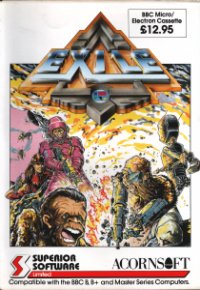
Exile is a single-player action-adventure video game originally published for the BBC Micro and Acorn Electron in 1988 by Superior Software and later ported to the Commodore 64, Amiga, CD32 and Atari ST, all published by Audiogenic. The game was designed and programmed by Peter Irvin and Jeremy Smith. It is often cited as one of the earliest examples of a Metroidvania game and featured "realistic gravity, inertia and object mass years before players understood the concept of a physics engine... an astounding level of AI, stealth-based gameplay, a logical ecosystem governing the world's creatures and a teleportation mechanic that feels startlingly like a predecessor to Portal".

Impossible Mission is a video game originally written for the Commodore 64 by Dennis Caswell and published by Epyx in 1984. The game features a variety of gameplay mechanics from platform and adventure games, and includes digitized speech. Impossible Mission, which casts the player in the role of a secret agent infiltrating an enemy stronghold, is widely considered one of the best games for several platforms.
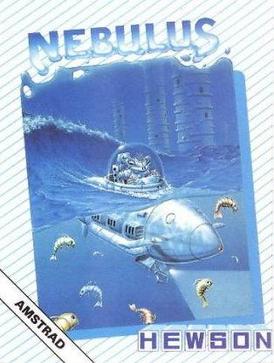
Nebulus is a platform game created by John M. Phillips and published by Hewson Consultants in the late 1980s for home computer systems. International releases and ports were known by various other names: Castelian, Kyorochan Land, Subline, and Tower Toppler.

Tynesoft Computer Software was a software developer and publisher in the 1980s and early 1990s.
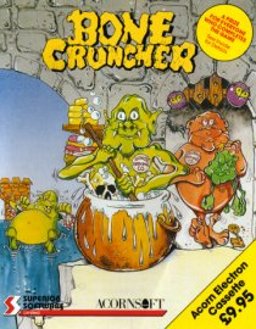
Bone Cruncher is a puzzle video game for the Acorn Electron, BBC Micro, and Commodore 64 first published by Superior Software in 1987. It uses the "rocks and diamonds" mechanics of Boulder Dash. An Amiga version was released in 1988.
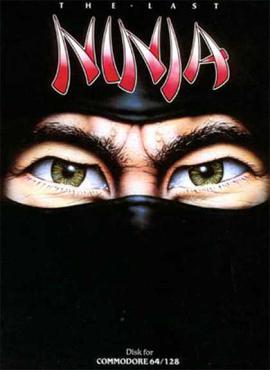
The Last Ninja is an action-adventure game originally developed and published by System 3 in 1987 for the Commodore 64. It was converted to the Apple IIGS, MS-DOS, BBC Micro and Acorn Electron in 1988, the Apple II series in 1989, the Amiga and Atari ST in 1990, and the Acorn Archimedes in 1991.
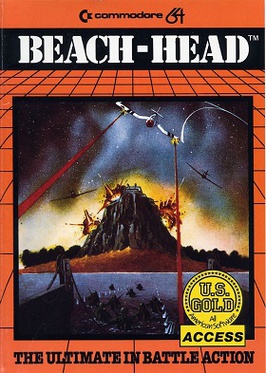
Beach-Head is a video game developed and published in 1983 by Access Software for the Atari 8-bit family and Commodore 64 home computers in the US. Versions for the ZX Spectrum, BBC Micro, and Acorn Electron were published in Europe by U.S. Gold in 1984, followed by versions for the Amstrad CPC, Commodore 16 and Plus/4 in 1985.

Gridrunner is a fixed shooter video game written by Jeff Minter and published by Llamasoft for the VIC-20 in 1982. It was ported to the Atari 8-bit family, ZX Spectrum, Commodore 64, Commodore PET and Dragon 32. Many remakes and sequels have followed, including versions for the Atari ST, Amiga, Pocket PC, Microsoft Windows, and iOS.

Last Ninja 3 is an action-adventure video game that was developed and published by System 3 for the Commodore 64, Amiga, Atari ST in 1991. It is a sequel to the 1988 game Last Ninja 2.

Last Ninja 2: Back with a Vengeance is an action-adventure video game developed and published by System 3 for the Commodore 64, ZX Spectrum and Amstrad CPC in 1988 as a sequel to the 1987 game The Last Ninja. The Acorn Electron, BBC Micro, 1990: Amiga, Atari ST, MS-DOS and NES ports followed in 1989. The NES version of the game was named simply The Last Ninja. In 1990, the Last Ninja Remix edition of the game was re-released for 8-bit systems.

Judge Dredd is a 1991 platform shoot 'em up video game based on the character of the same name. It was developed by Random Access and published by Virgin Mastertronic. It was released in Europe in 1991, for the Amiga, Atari ST, Commodore 64, and ZX Spectrum. Critics found the gameplay repetitive.
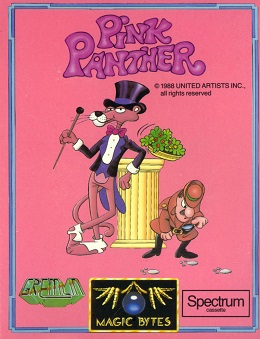
Pink Panther is a 1988 video game based on the character of the same name. It was developed by German company Magic Bytes and published by Gremlin Graphics. It was released in Europe for Amiga, Amstrad CPC, Atari ST, Commodore 64, and ZX Spectrum. Pink Panther was criticized for its control and difficulty, although the Amiga and Atari ST versions received praise for their graphics.


















